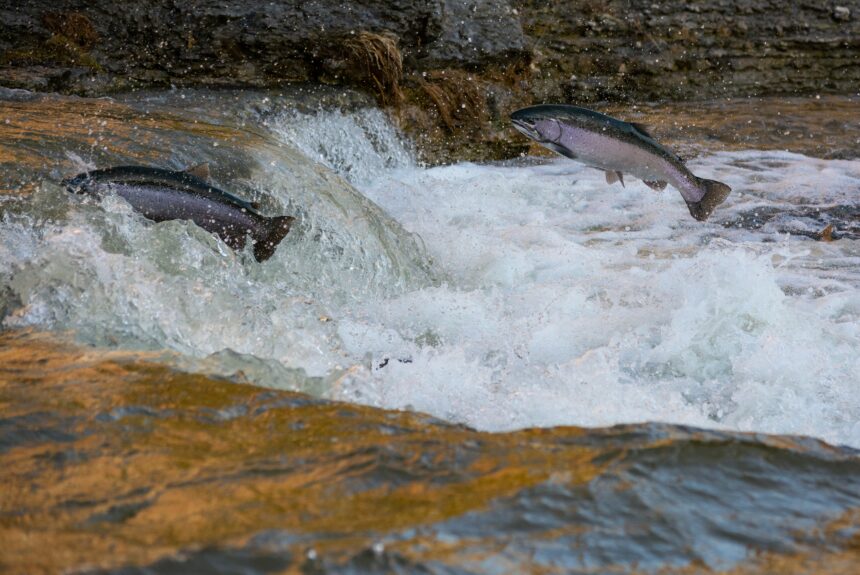Subsistence groups and commercial fishermen are currently fighting over the fish that pass through a state-managed portion of ocean called Area M in Alaska. The problem? Fish are considered common property in the state, which has led to overfishing and arguments about which group “deserves” the fish in Area M.
The tragedy of the commons is the economic principle that when multiple groups have claim to a common resource with no rules regarding consumption, that resource gets over-consumed and depleted. The theory is based on the assumption that groups or individuals act in their own self-interest. If you don’t catch the fish, someone else will. As individuals consume the common resource, there is no incentive for them to replenish or limit their consumption, which leads to harmful over-consumption.
>>>READ: Overfishing: The Sustainability Issue You’ve Never Heard Of
Area M, a portion of ocean located near the Aleutian Islands in Alaska, is managed by the state and is considered an intercept fishery. Fish caught in this section of water are “intercepted” here by commercial fishermen, as they are swimming from the ocean up the Yukon and Kuskokwim Rivers to spawn. Two main groups have laid claim to the fish that pass through the area, commercial fishermen and subsistence fishermen. Both argue that the salmon which pass through Area M are vitally important to their livelihoods and communities.
Many subsistence fishermen, Alaska Native people who catch salmon during the summer months to eat during the winter, live in the Yukon-Kuskokwim Delta (Y-K Delta) and fish on the Yukon and Kuskokwim Rivers. They rely on salmon runs—King, Chinook, and chum salmon—up the rivers to provide food for their families and have for many generations.
Commercial fishermen also rely on the salmon in Area M for their livelihoods. They come from small fishing communities in Alaska whose economies fluctuate with the fishing season.
Currently, the fish in Area M are regulated loosely by the state of Alaska Fish and Game department. Additional top-down regulations are the sounding cry from many fishermen in the area, hoping for government crackdowns and further permitting. And government regulations certainly are one solution to the tragedy of the commons.
However, fishing communities around the world have found better solutions to the age-old problem of overfishing in waters owned by no one.
One popular solution, particularly with fishermen, has been to implement collective property rights, championed by Nobel economist Elinor Ostrom. Collective property rights are based on the idea that local communities are the best groups to manage their natural resources, because they are the ones using the resources and also the ones best able to regulate the use of the resources.
Particularly in the case of fish, many groups across the world, including fisheries in Alaska, use individual transferable quotas (ITQs), or catch shares, to manage fishing areas. An ITQ is essentially a quota permit that is transferable—a fisherman who has an ITQ can sell it, or a portion of it, to another fisherman. If fisherman A has a quota of 1,000 fish but only has time to catch 500, he can sell or lease the other half of his quota to fisherman B, who wants to catch additional fish.
>>>READ: Ready for some good news? Fin whales are coming back
Alaska has implemented its own, similar system, known as a Community Quota Entity (CQE) that allows communities, rather than individuals, to have and manage a quota, enabling Alaska Native communities to be on more equal footing with large commercial fishing operations. CQEs don’t currently apply to salmon fishing and are managed by the federal government.
While a traditional ITQ system or a CQE may not be the best fit for the commercial and subsistence fishermen in Area M specifically, something similar created by those very groups would certainly be beneficial. What makes collective property rights successful is the acknowledgment from all parties involved that the resource should be used and protected properly for all users. In the case of Area M, the best solution should include user rules agreed on by both the commercial fishermen and subsistence cultures, with the state perhaps participating as an enforcer and/or mediator.
Both fishing groups deserve the ability to catch salmon that pass through Area M, now and in the future. A proper solution that emphasizes property rights and tradable permits will help the user groups both get the fish they need without depleting the resource, leaving enough for future generations.
Quinn Townsend has an M.S. in Resource Management and Economics from West Virginia University and is the Policy Manager at Alaska Policy Forum.
The views and opinions expressed are those of the author’s and do not necessarily reflect the official policy or position of C3.
